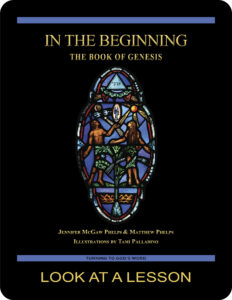sojourn
 One theme that frequently emerges in the Old Testament is that of a sojourn. In the books of Genesis and Exodus especially, we read about
One theme that frequently emerges in the Old Testament is that of a sojourn. In the books of Genesis and Exodus especially, we read about
the patriarchs and the Israelites sojourning in the Promised Land. What exactly is a sojourn, and how is it relevant to the Church today?
The word sojourn comes via French from a Latin word that literally means “under a day” and comes more broadly to mean “a temporary stay.” The early Israelites fundamentally were a traveling people who viewed every place they stayed as a temporary residence.
This same idea applies to the way the early Christians viewed time on earth. They saw their earthly lives as a sojourn, a temporary stay before ultimately reaching their permanent home in heaven. How many examples can you name from the Old Testament that describe God’s people on a sojourn? What evidence of sojourning can be found in the New Testament?
How might viewing this life as a sojourn or temporary stay change your everyday behavior? How might it change your long-term plans? Why do you think it was that the early Christians adopted this point of view?
related topics: rest; stopping; tabernacle
you also may like our study of the book of Genesis
 The first seven lessons of In the Beginning: The Book of Genesis, a 28-lesson Catholic Bible study with an imprimatur, provide an in-depth look at the very earliest biblical history—including the two accounts of Creation, events surrounding the Fall of Adam and Eve, the relationship between Cain and Abel, and the baptismal foreshadowing present in the account of Noah and the Flood. Remaining lessons look at lives of the patriarchs Abraham, Isaac, Jacob, and Joseph. Click on the book’s cover to view a sample lesson.
The first seven lessons of In the Beginning: The Book of Genesis, a 28-lesson Catholic Bible study with an imprimatur, provide an in-depth look at the very earliest biblical history—including the two accounts of Creation, events surrounding the Fall of Adam and Eve, the relationship between Cain and Abel, and the baptismal foreshadowing present in the account of Noah and the Flood. Remaining lessons look at lives of the patriarchs Abraham, Isaac, Jacob, and Joseph. Click on the book’s cover to view a sample lesson.
 Click on the picture of the statue of Moses with horns (above) to learn more about Lost in Translation. A new entry is archived each Monday. Contact us to receive Lost in Translation by email every week. You may use any of the contact links on our website to ask Matthew a question.
Click on the picture of the statue of Moses with horns (above) to learn more about Lost in Translation. A new entry is archived each Monday. Contact us to receive Lost in Translation by email every week. You may use any of the contact links on our website to ask Matthew a question.
